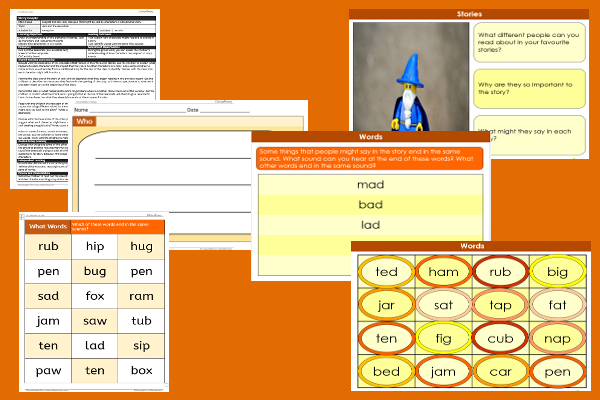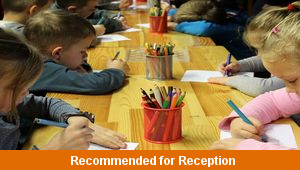Lesson Two – Story People

This literacy teaching pack for the Foundation Stage gets the children to explore how to suggest and role-play dialogue that might have been said by the characters about some of the special events that happened in a traditional story.
The class can practise matching and listing pairs of cvc words that end in the same final phoneme that can be used to show character story dialogue.
Download this teaching pack including a lesson plan, classroom activities and an interactive presentation to explore how to suggest and role-play dialogue that might have been said by the characters about some of the special events that happened in a traditional story
Activities in this teaching pack include a template to select and record dialogue that might have been said by the characters about events that happened in a traditional story to use in a role-play of the story and a worksheet to identify and match different pairs of word that end in the same final sounds.
The interactive presentation gets the children to explore and role-play dialogue that might have been said by the characters about events that happened in a traditional story.
This lesson is part of a literacy scheme of work to get the children to explore, role-play and change the sequence of narrative events that occur in a traditional story and select and match cvc words with the same final phoneme sounds. There are teaching activities for shared learning, differentiated worksheets to support independent learning and interactive presentations to introduce concepts and key skills.
-

Halving Things
Explain and model how to find and record the halves of some of the different objects that can be used at home and in school
-

School Friends
Identify and learn classroom routines and organisation by exploring and describing information and likes and dislikes for each of their classmates
-

Classroom
Identify the location and function of different objects used in the classroom and explore how to formulate rules to manage the classroom safely
-

Shape Patterns
Identify, describe and compare the sequences of geometric shapes that have been used to create a range of different patterns
